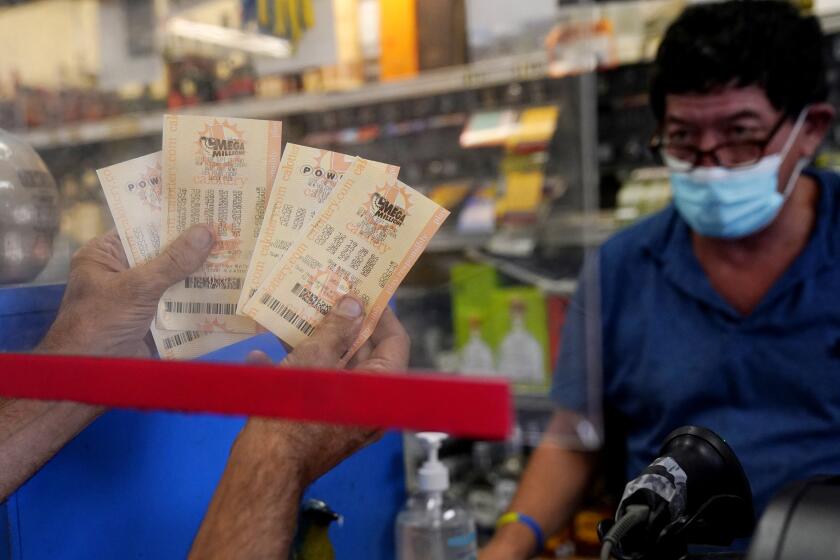The LAPD’s biggest conundrum: How to suppress crime without alienating South L.A.’s black residents
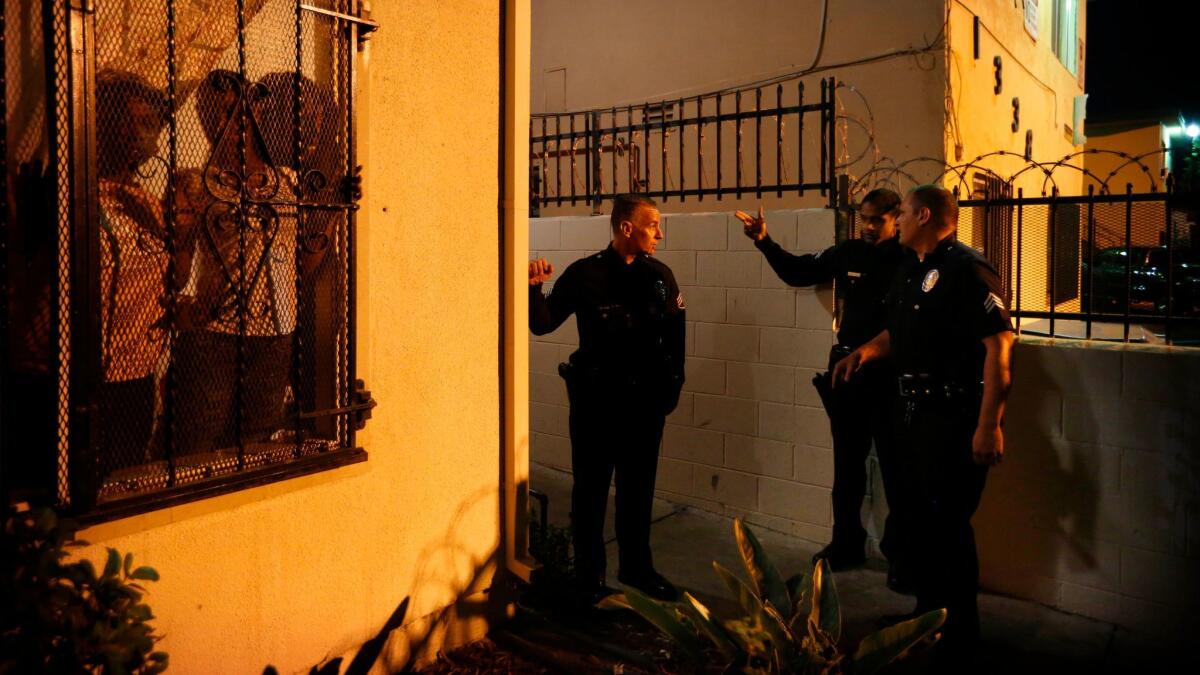
- Share via
On a chilly night in South Los Angeles, a young black man stood on the sidewalk watching police officers rummage through his car.
Their reason for stopping him: the tinted front windows on his Nissan Maxima. Because he was on probation, the officers could legally conduct a search. It was the first of four times that Rio Cater would be stopped by police that night.
When an officer praised his cooperative attitude, Cater, 28, replied that he was trying to avoid being ha— …
“Don’t say the ‘h’ word,” the officer broke in, before Cater could say “harassed.”
The officers were from the Los Angeles Police Department’s elite Metropolitan Division, assigned to South L.A. as part of an emergency operation. This past summer, Metro officers in unmarked cars flooded high-crime, predominantly African American and Latino areas, stopping drivers with paper license plates, tinted windows or broken tail lights as a pretext to search for illegal guns and find dangerous criminals.
There is evidence that the strategy paid off. During the six-month operation, Metro officers seized 300 guns, and the number of killings stabilized.
Yet there is a cost, particularly at a time when police shootings of black men have put the country on edge.
Black residents interviewed throughout South L.A. said they deeply resented how often they are pulled over and the way they are treated by some police officers. Many acknowledge that they need the LAPD to keep them safe. But some long for bicycle or foot patrols, so officers can develop a personal relationship with the community.
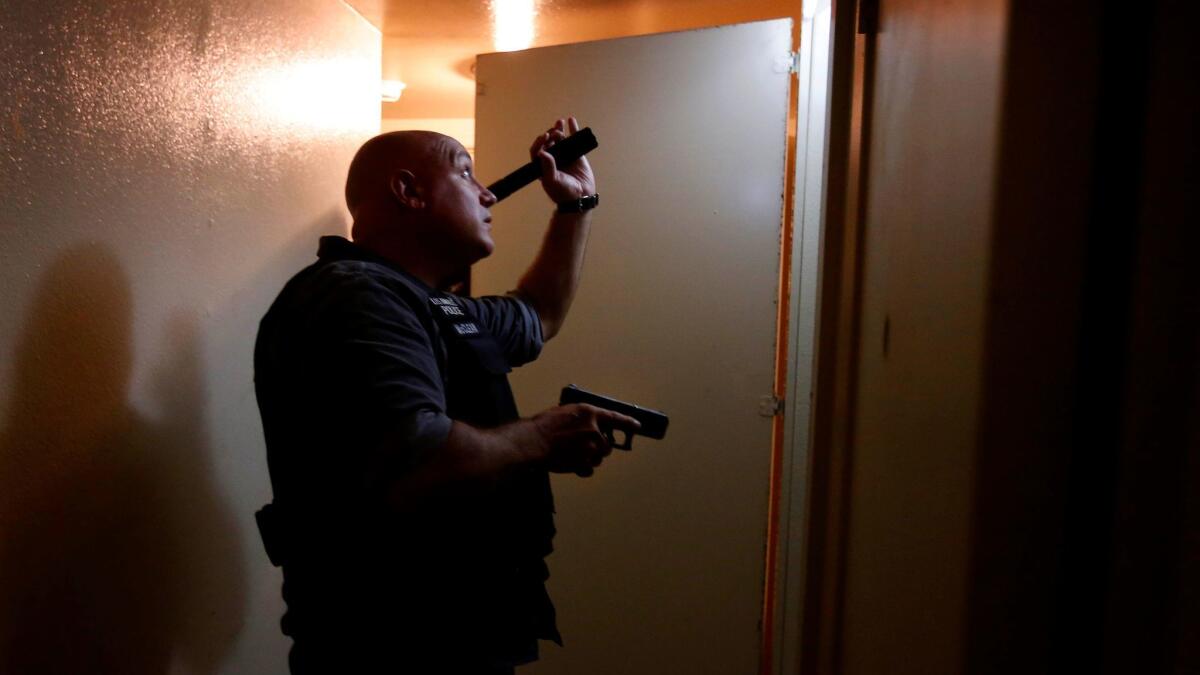
A recent survey funded by the LAPD confirmed what many already knew: More than two decades after the Rodney King riots, blacks are much less likely than other residents to view officers as honest and trustworthy — or to believe that the police use force only when necessary. Despite efforts to build ties, the LAPD’s standing with African Americans remains fragile.
The LAPD faces a conundrum: how to crack down on crime without alienating law-abiding residents. Saturating an area with aggressive patrols can be effective in reducing violent crime but can sow resentment among locals stopped by police on their way to work or a dinner date.
But inconveniencing some innocent people is a price that LAPD Chief Charlie Beck is willing to pay.
With nearly 300 homicides citywide in 2016, the stakes are high. Half of violent gun crimes occur in South L.A., and roughly a third of homicide victims are black. After decades of steady decline, crime has been on the rise citywide for the last three years.
“Let’s be clear — these are areas that are hugely impacted by murder, by folks being shot, by gang crime, by things I think are much more detrimental to the neighborhood than the occasional stop by police officers that results in no action,” Beck said.
::
Cater did not receive a ticket for his tinted windows, nor did police officers find anything illegal in his car each of the four times they stopped him in the part of lower Baldwin Hills known as “The Jungle.”
But his routine — going to the gym, dropping off food at his grandmother’s house — was interrupted.
To Cater, the heavy police presence in his neighborhood is a form of racial profiling — and a potential flashpoint for violence.
“The cops are not knowing what they’re walking into,” said Cater, a plumbing apprentice who recently served jail time for a robbery. “They don’t know who I am or what I’m thinking. I don’t know what they’re thinking. It’s a dangerous recipe.”
Metro Sgt. Jeritt Severns — who was watching as Cater’s car was searched — wound up later that night at an apartment building near Normandie and West Slauson avenues, where shots had been fired from the street. Young black men and women reacted angrily when police officers ordered them out of their apartment to line up outside, facing a wall.
“Go find the shooters. Why are you bothering us? Y’all really messing with the wrong people,” a woman said heatedly.
“I’ve been yelled at since I got here. Give me some … respect,” Severns shot back with a profanity, before explaining that his colleagues were trying to make sure that no one inside the apartment was hurt.
“We’re just going to let someone bleed out in there?” a young man with a walker asked incredulously.
The Homicide Report: A story for every victim »
Severns, a 19-year veteran, helped supervise 25 officers during the South L.A. operation. On a typical night, he said, they would find several guns and make half a dozen or more felony arrests.
Severns knows the turf well, having worked in South L.A. for years as a patrol officer and as a gang and narcotics officer.
A trim 5 feet 8 with sharp features and colorful tattoos peeking from underneath his long-sleeved blues, Severns is as quick to share photos of his Labrador puppies, Carl and Pete, as he is to expound on his encyclopedic knowledge of local gangs.
As the controversy over police shootings and other deadly force has escalated, he said, he has felt increased animosity from some South L.A. residents.
Severns, who is white, prefers to shave his head so he can slide a helmet on and off more easily. But he has let his hair grow out to cut down on the “skinhead” taunts. He is regularly called “cracker” or “blue-eyed devil,” he said.
To counteract those sentiments, Severns said Metro officers must set an example with their behavior. Only when residents get angry do officers raise their voices, he said.
“If we do stop people for a minor traffic violation, it’s important … that they have a good interaction,” said Severns, 41. “There might be people watching from windows who have a lasting impression. They don’t want to see people yelled at or demeaned.”
Greg Hoskins, a Metro sergeant who is African American, said police do not target black men because of their race. Rather, he said, people in high-crime neighborhoods are susceptible to being stopped because that is where police focus their resources.
The emergency South L.A. operation has ended, but the area is still more heavily policed than other parts of the city.
When he stops someone, Hoskins said, “I always acknowledge that it’s inconvenient. I say that part of my job is to be nosy and inquisitive — that it is for the greater good.”
::
In early 2015, Beck responded to the city’s first major crime increase in more than a decade by doubling the size of Metro to nearly 500 officers.
After an alarming 14% increase in homicides at the start of 2016, the chief ordered extra Metro platoons into South L.A. for the emergency operation.
By September, homicides were down 10% in the area compared with the previous year. So Metro scaled back its presence. Crime then inched up, and some Metro officers were reassigned to South L.A.
Metro officers aren’t assigned to a station and aren’t obligated to respond to 911 calls, allowing them to concentrate on vehicle stops and other proactive policing techniques. The division also includes canine, SWAT and mounted units.
The stereotype of Metro as arrogant and hard-charging is outdated, said Capt. Greg McManus, who leads the division. His officers attend community meetings, and many, like Severns, have worked South L.A. in previous assignments.
“We are elite but not elitist,” McManus said. “The perception now when we roll out is one of partnership.”
It’s wonderful to have help, but it hurts us because they don’t know us.
— Danielle Strickland, a Southwest Area Neighborhood Development Council member, talking about Metro Division officers
Among area residents, Metro is commonly known as “CRASH” — the moniker of the anti-gang units, long disbanded, that also traveled in unmarked cars. In the Rampart corruption scandal of the late 1990s, CRASH officers were implicated in theft, lying, planting of evidence, beating and framing suspects and other misconduct.
“It’s wonderful to have help, but it hurts us because they don’t know us,” Danielle Strickland, a member of the Southwest Area Neighborhood Development Council, said of Metro officers at a recent meeting.
“‘Coffee with a Cop’ — that’s with you guys,” Strickland continued, addressing two community relations officers from the LAPD’s 77th Street station who regularly attend the meetings. “You guys know us.”
As a young black man, council member Daniel Stewart said he is caught between gangs and police and is stopped by one or the other nearly every day. When he is pulled over, it is almost always at gunpoint, he said at the meeting. He was recently shot at by gang members, he said.
“I can’t even walk the streets,” said Stewart, 29, who is studying political science at El Camino College and wants to go into politics. “A good day for me is if I stay home and play video games.”
Brent Page, president of the council, cited a recent basketball game between LAPD officers and pickup players at Saint Andrews Recreation Center — the cops won — as a step toward healing the rift.
That rift runs deep for a group of middle-aged men hanging out at Vermont Square Park after work on a recent afternoon. They said they grew up in the neighborhood and have jobs — barber, window washer, chef, machinist — but have been typecast by the police as troublemakers since they were pre-teens.
“When you’re young and black in the ’hood, as soon as the police pull up on you, they’re … putting you in a gang. ‘What’s your name? Everyone has a nickname.’ It starts at 12 or 13,” said a 45-year-old who would not give his name, saying he fears police retaliation. Metro officers are nothing more than another gang, he said.
In car-dependent Los Angeles, vehicle stops are a particular sore spot. As long as drivers have violated a traffic law, however minor, officers can pull them over, then search the car if there is probable cause to suspect another criminal offense.
Elsewhere in the country, too, vehicle stops create fear and resentment, particularly among African American residents, and can escalate into “unintended spirals” of violence, according to Charles Epp, a professor at the University of Kansas and expert on racial bias and the law.
“Police should take steps to discourage the widespread use of these stops and deploy them only when absolutely necessary, rather than as the most common go-to method to getting guns and drugs off the street,” Epp said.
According to LAPD statistics for January through November 2016, 26% of drivers stopped in the city were black, 46% were Latino and 18% were white. The city’s population is about 10% black, 48% Latino and 29% white.
But in the land of drive-by shootings, the LAPD is not about to abandon an important crime-fighting tool.
“The shootings that we suffer in these communities occur because of easily transportable weapons in vehicles,” Beck said. “So part of what crime suppression must do is make some vehicle stops.”
TyRon Turner, another member of the neighborhood council, said Metro’s stepped-up presence this summer did prevent some gang violence.
The downside “is that people who look a certain way but are innocent fall into a certain category,” said Turner, 39, who owns homes for developmentally disabled adults.
The police, Turner said, are “damned if they do, damned if they don’t.”
Turner said he is pulled over less often now that he has some gray hair. But looking older did not prevent him from being stopped last year while driving his Mercedes in Watts. Turner said the officer, who was in an unmarked car, asked if he was a drug dealer.
::
Whenever he can, Severns said, he tries to develop a rapport with the people he encounters.
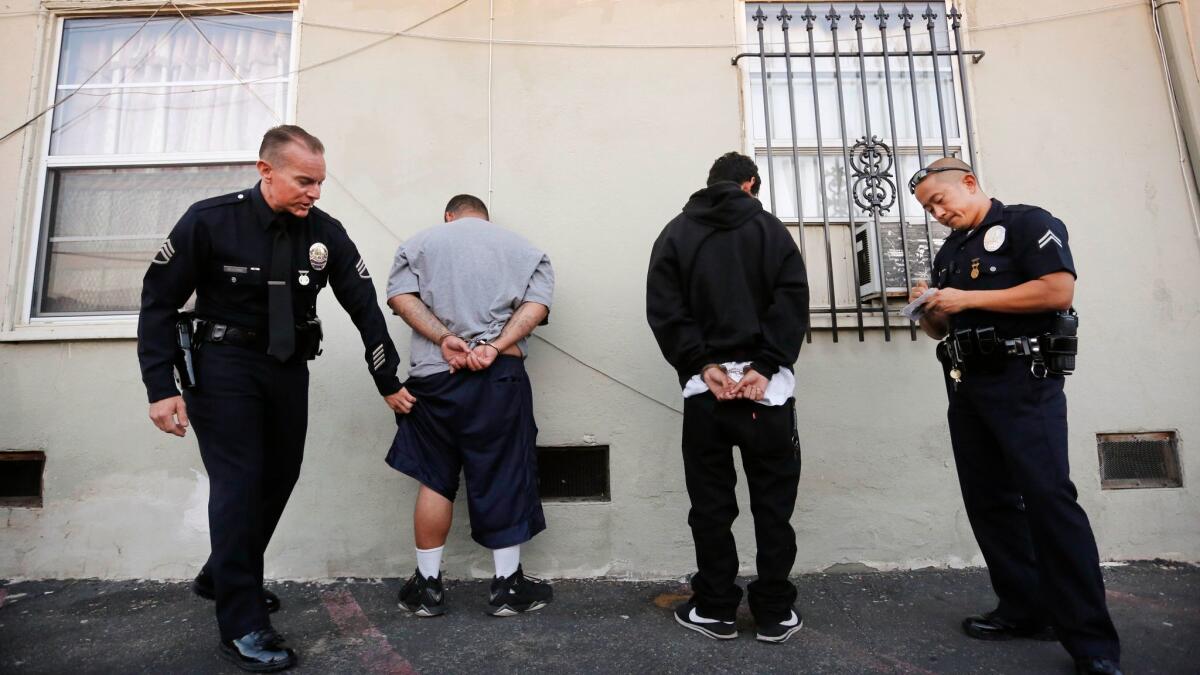
On his way to South L.A. the night that Cater’s car was searched, Severns chatted with a suspect in the Pico-Union area about the pain of being inked.
“The stomach was hell,” said Severns, whose body is covered with tattoos of clowns, samurai and law enforcement symbols. “The chest hurt too, because it’s close to the bone.”
The man was letting his hair grow over a scalp tattoo that said “ERZ” — short for Easy Riders, a local Latino gang. Covering up the tattoo was a sign, Severns said afterward, of trying to leave the gang life behind.
On his way back to his car, Severns stopped to kick a soccer ball and toss a football with a neighborhood boy. The balls had almost no air left in them.
“Do you like Nerf?” Severns asked. He dug around in his SUV for a Nerf football in a pile left over from a toy giveaway. The boy hung back shyly, then accepted the new ball.
“When he becomes a teenager, this street takes him over or it doesn’t,” Severns said as he drove away.
By midnight, as the end of the shift neared, the 79 Metro officers deployed throughout South L.A. had seized only one gun — a slow night.
Severns got gas and was about to head back to Metro headquarters when a call came over the radio. He turned on his siren and floored the gas pedal.
At West 48th Street and Halldale Avenue, a gray Toyota minivan was parked crookedly in front of a driveway. A black man was slumped over the steering wheel. He had been shot in the head. A woman in the passenger seat had been shot in the legs.
Severns tried to get information from the woman before the ambulance arrived.
“What color was the car, sweetie?” he asked. “What did they look like? Were they black? How old?”
Firefighters pulled the motionless man out of the car. His face was streaked with blood.
One firefighter carefully placed a stethoscope on the man’s chest.
No heartbeat. He was dead.
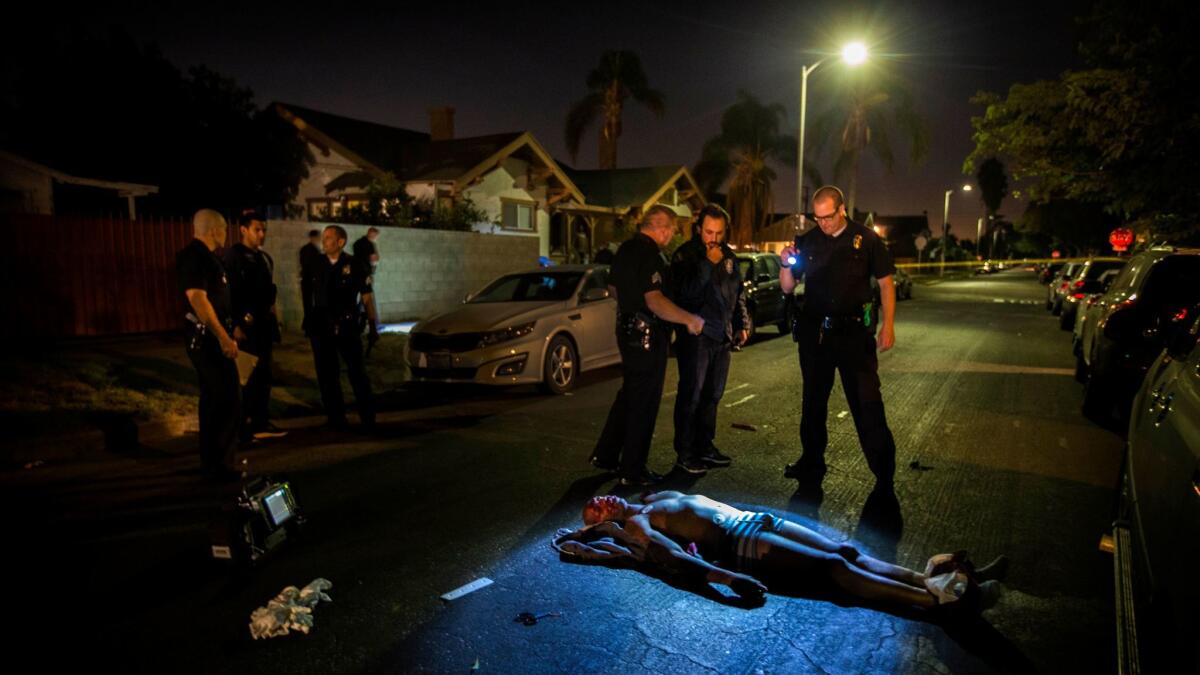
ALSO
San Bernardino deputy caught on video threatening to ‘create’ charges and send man to jail
More to Read
Sign up for Essential California
The most important California stories and recommendations in your inbox every morning.
You may occasionally receive promotional content from the Los Angeles Times.





